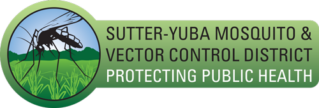The threat of a painful wasp sting makes most people very concerned about wasps and their nests, especially around the home or workplace. However, stinging incidents do not occur very often. It is best to leave bees and wasps alone, unless their nests and activities present a danger. There are times when control measures need to be taken and wasps and their nests must be removed. People may fear bees, wasps, yellowjackets and hornets, but they are very beneficial to humans and ecosystems in many ways. Some are predators of harmful insects and some are beneficial pollinators of many different kinds of plants.
Wasps are generally divided into two groups – the solitary wasps and the social wasps.
| Solitary | Social |
|---|---|
| Mud Daubers | Yellowjackets |
| Spider Wasps | Hornets |
| Sand Wasps | Paper Nest Wasps |
Solitary wasps rarely cause problems or stinging events. They are called solitary wasps because they build nests only for their own offspring. They do not colonize or build nests where many wasps live together. Although they may look threatening, most of them do not defend their nests and rarely sting people. For example, Mud Daubers build a hard nest out of mud, usually on the walls, ceilings, eaves or attics of buildings. Each nest is attended by a single female wasp. The Mud Dauber’s favorite food is spiders. The Blue Mud Wasp is a relatively common solitary wasp that lives in our area. This wasp repairs and uses abandoned nests of other wasps. The Black Widow spider is at the top of their menu. Sand Wasps, such as those belonging to the genus Bembix, dig nest holes in loose sandy ground. They catch and paralyze prey insects such as flies, then place them inside the nest holes and lay their eggs on them. The paralyzed flies serve as food for the wasp larvae when they hatch.
Social wasps include the Yellowjackets, Hornets and Paper Nest Wasps. They live together in common nests or aggregate together by building their nests close to each other. Most of these wasps are efficient and beneficial predators of armyworms, corn earworms and other agricultural and home garden pests. Hornets will eat house flies, blow flies and caterpillars. Other Yellowjacket species are exclusively scavengers and will feed on carcasses, garbage and picnic lunches. In some places, such as campgrounds in the Sierras, these are called meat bees. Unless wasp nests are active near human activities, it’s best to leave them alone. Unlike solitary wasps, these wasps can become very defensive and protective of their nests if disturbed. Loud noises and vibrations from machines like lawn mowers can cause them to become very aggressive. Even vibrations from footsteps or walking too close to a nest can make them become defensive. Yellowjackets, hornets and paper nest wasps are also attracted to sources of water and certain odors. Swimming pools, ornamental ponds and other sources of standing water will attract nest building workers. Foraging and scavenging workers may be attracted in differing degrees to clover, ripe or rotting fruit, pet food, garbage, soft drinks and a variety of cooked or uncooked meats. They are attracted to many of the same kinds of foods humans prefer. Perfumes, hair sprays, suntan lotion and other cosmetics can sometimes attract wasps, bees and yellowjackets.
Yellowjackets / Hornets
Yellowjackets and hornets include several species of wasps in the genera Vespula and Dolichovespula. These wasps build nests in a variety of shapes and locations. Vespula pensylvanica is a ground nesting species, often called meat bees or simply yellowjackets. Vespula vulgaris commonly builds its nests in rotting tree stumps in higher elevations. Vulgaris germanica is commonly found in urban areas, sometimes nesting in houses. Dolichovespula maculata, the bald faced hornet, builds paper nests and attaches them to eaves of buildings or limbs of trees. Colonies of these species reach much higher numbers than paper nest wasps. They can achieve population numbers ranging between 1,500 and 15,000 individuals. Besides meeting them as they try to steal picinic food, they can also be encountered when people inadvertently disturb ground nests or nests in walls or trees.
Paper Nest Wasps
Paper nest wasps include species belonging most commonly in the genus Polistes. They can be distinguished from other bees, hornets and yellowjackets in that they are somewhat less aggressive and they build hexagonally shaped, open paper nests attached to a surface on a slender stalk. Color and markings vary but include yellows, browns and blacks. The nest is constructed in protected areas above the ground. Common places they like to build their nests include voids in buildings and walls or under the eaves of homes and other buildings. They can also be found in various types of equipment and machinery, pipe fences and gates, inside shops and barns, and vegetation such as thick shrubs and trees. Nest building begins in the spring, with construction and maintenance continuing as the colonly grows in size. Wasps gather fibers from old decaying wood or dead, dry plants, chew them up and mix the debris with water to make their grey papery nest. Populations in these nests rarely exceed 200. Exceptions to this rule apply to Polistes dominulus, the European Paper Nest Wasp. It is an invasive wasp species that has been in the United States for many years. It has been in California for a long time now, and can be very numerous and troublesome in the Sutter-Yuba area.
